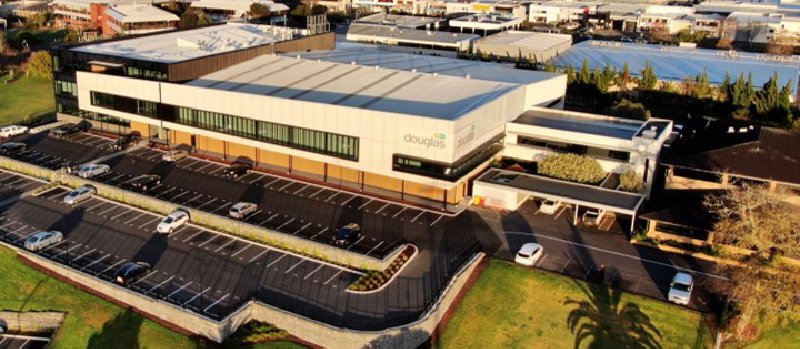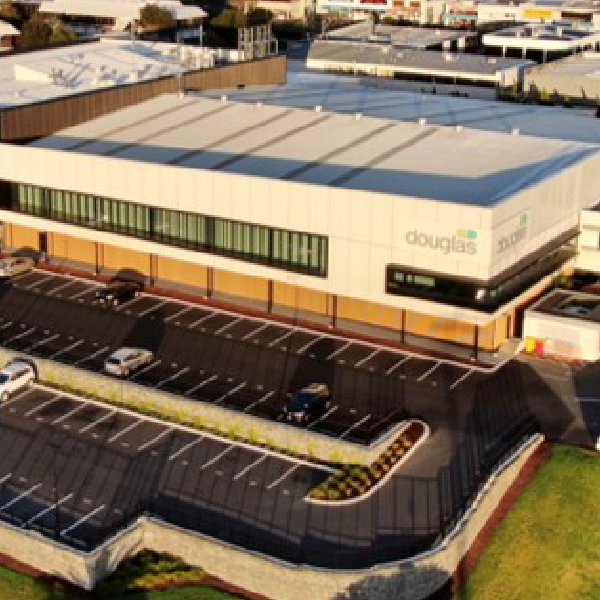Douglas Pharmaceuticals’ aim is clear: to improve people’s lives. The company was founded in 1967 by West Auckland pharmacist Sir Graeme Douglas who dispensed prescription medicines. In 1980 he turned his hand to manufacturing and by the 1990s Douglas was successfully researching and developing its own products for the domestic and international markets.
Today, Douglas employs 720 people and exports to over 40 countries around the world under the leadership of Jeff Douglas, Sir Graeme’s son. Douglas has sites in New Zealand and Fiji and is New Zealand’s largest family-owned healthcare company.
The company consistently features in the top quintile of the TIN100 and won TIN’s Ten to Watch awards in 2016, 2017, and 2018.
We caught up with the team at Douglas Pharmaceuticals to find out more about their priorities in 2022 and 2023.
In the 2021 TIN Report you mentioned that your best business decision in 2021 was “…completion of phase II clinical trial for study of oral ketamine in the treatment of TRD (Treatment Resistant Depression)…we also launched a nutraceutical range (BraveFace) to assist with stress and anxiety.”
Clearly, R&D sits at the heart of what you do. How has R&D changed over the past two years as the world deals with COVID-19?
R&D is a main priority within Douglas, as the core avenue for driving future growth. The impacts from COVID-19 have driven up the cost of goods of many products in development, impacting the financial feasibility of these projects. Freight challenges, long lead-times, and delays in clinical trial recruitment have also affected project timelines.
Douglas has recently refocused their R&D spend, acknowledging the unfavourable market dynamics of generic pharmaceuticals, with high cost of goods and low selling prices driven by high competition. This has been particularly apparent in the US market, caused by three main buyers versus multiple sellers. Douglas is directing its ongoing R&D investment towards novel innovation projects, where there is greater intellectual property and opportunity for long-term value creation.
Your recent focus on treatment of TRD and stress & anxiety (BraveFace) is of high relevance with people globally dealing with the ongoing impact of COVID-19 on their lives.
How do you decide which innovations to focus your R&D efforts and spending on?
 An innovation steering group makes the decision for all R&D investment and governs the full R&D programme. This is made up of a cross-functional team to ensure diverse thinking and an understanding of how market opportunities intersect with intellectual property, regulatory and clinical pathways, and scientific rationale. Douglas targets innovations which utilise its expertise in specific therapeutic areas, molecules, and core technology platforms. Ideas are sourced from partnerships with universities and research institutions, and through internal idea generation. Critical to the success of Douglas’ R&D is understanding the patient, prescriber, and payer needs before determining what products to invest in developing. The market opportunity must be validated before any significant investment is made or product development progressed, to ensure this will result in a positive commercial outcome.
An innovation steering group makes the decision for all R&D investment and governs the full R&D programme. This is made up of a cross-functional team to ensure diverse thinking and an understanding of how market opportunities intersect with intellectual property, regulatory and clinical pathways, and scientific rationale. Douglas targets innovations which utilise its expertise in specific therapeutic areas, molecules, and core technology platforms. Ideas are sourced from partnerships with universities and research institutions, and through internal idea generation. Critical to the success of Douglas’ R&D is understanding the patient, prescriber, and payer needs before determining what products to invest in developing. The market opportunity must be validated before any significant investment is made or product development progressed, to ensure this will result in a positive commercial outcome.
- Our People – Ensuring our people are highly engaged and recognised for great work, and that we have the right people in the right roles focused on the right activities.
- Business optimisation – Maximising the value of our existing portfolio and customer relationships through improving cost competitiveness, delivering DIFOT expectations, and sustaining a high quality of performance to deliver quality products to our customers around the world.
- Creating novel intellectual property - Commercialisation of some of our early-stage novel assets and establishing a track record for our novel development strategy, supported by a pipeline of compelling ideas that deliver on unmet clinical needs.
Diversification has played an important role in the ongoing success of the Douglas business. For example, in the 1990’s when Pharmac entered New Zealand and transitioned the market to a one-payer system, Douglas was able to pivot to overseas market opportunities. Having a diverse portfolio of products, customers, and markets has meant the company can adapt to changing market conditions and reprioritise their focus in response, to sustain their level of profitability and performance.
However, ensuring that there is sufficient focus to the areas of the business that drive the greatest value has been critical to success, particularly as diversification can impact the ability to drive efficiencies and scale. Douglas has also learnt that it is important to focus on those things it does best and utilise partners to support in those areas where they may not be as strong.
You work with partners globally to research and develop, manufacture, market and distribute prescription and OTC products.
What are your top three tips for working successfully with international partners on R&D as well as manufacturing and distribution?
- Have open and transparent discussions on risks and opportunities.
- Understand and leverage the strengths and weaknesses of each party.
- Deliver quality products and services efficiently and effectively, and understand your partners’ needs and business drivers so you can both be successful.
Click here to learn more about Douglas Pharmaceuticals.
Share this Post

